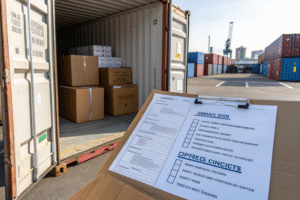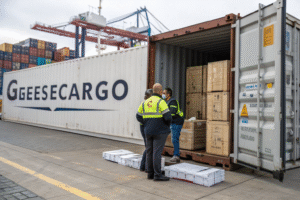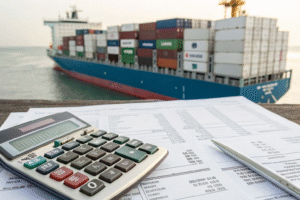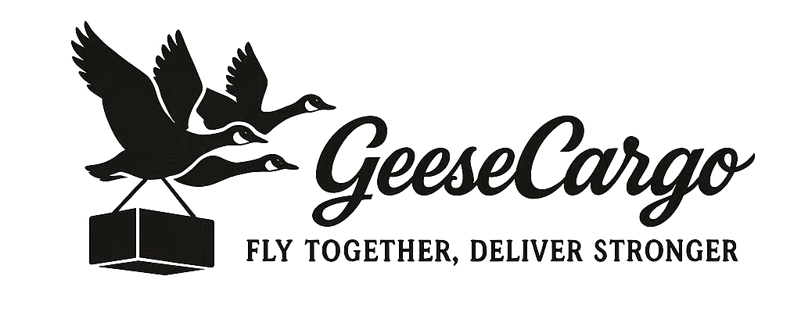Shipping internationally isn’t just about choosing the cheapest freight rate. To truly protect your profits, you need to know how to calculate duties accurately and plan the most cost-efficient logistics strategy.
This guide will walk you through how to calculate customs duties and implement smart methods to reduce global shipping costs—whether you’re importing from China to the U.S., Europe, or beyond.
If you regularly ship large quantities of goods like Ron does—especially clothing, accessories, or gifts—then every percentage point matters. Let’s explore the framework for calculating duties and optimizing freight spend.
What Are the Key Components of Duty Calculation?
Every country has a different system for calculating duties, but they’re usually based on three factors: classification, origin, and value. A mistake in any of these steps can cause overpayment or delays.
To calculate duties correctly, importers need to determine the product’s HS code, country of origin, and the customs value (CIF or FOB).

How Do You Find the Correct HS Code?
The Harmonized System Code (HS code) is a universal system for classifying traded goods. It directly affects duty rates. Use tools like HTSUS for the U.S. and EU TARIC for Europe to search.
GeeseCargo offers HS code validation for clients to ensure accurate filings—avoiding unnecessary audits or penalty fees.
What’s the Role of Declared Value?
The customs value usually includes the FOB price (product only) or CIF value (product + freight + insurance). Countries like the U.S. use FOB, while others like the EU often calculate duties based on CIF.
Use the WTO Valuation Agreement as a reference, and always separate dutiable and non-dutiable charges on your invoice.
How Can You Lower Tariffs with Trade Agreements?
Trade deals exist to encourage global commerce—and they can cut your duties to zero if you know how to use them. But these benefits require proper documentation.
Free Trade Agreements (FTAs) like USMCA, KORUS, and EU-Vietnam can reduce or eliminate import tariffs—but only with correct Certificate of Origin filings.

Which Products Qualify for Duty-Free Entry?
Eligibility depends on the origin rules and HS code. For example, under USMCA, most textile goods from Mexico and Canada can enter duty-free. KORUS FTA provides similar benefits for Korean-made clothing and electronics.
You must ensure that the product meets local content requirements and that a valid Certificate of Origin accompanies each shipment.
How Do We Handle FTA Compliance at GeeseCargo?
We work directly with suppliers to verify origin qualifications. Our team manages FTA document collection, formatting, and pairing with customs entries—maximizing savings without risking compliance violations.
We’ve saved our clients 5–18% per shipment just by leveraging applicable FTAs correctly.
What Strategies Reduce Global Shipping Costs?
Beyond duties, freight costs are another major piece of your landed cost puzzle. The best strategy often blends mode selection, route optimization, and shipping term planning.
To reduce total shipping costs, importers must choose the right freight method, optimize routes, use volume contracts, and apply DDP when appropriate.

Which Freight Mode Is the Most Cost-Efficient?
- Sea freight: cheapest per unit but slow (ideal for bulk goods)
- Air freight: fastest, but costly (best for urgent or high-value cargo)
- Rail + Road: ideal for China-Europe land bridges
- DDP: most transparent; simplifies total cost management
We help our clients compare current rates from top lines like Maersk, COSCO, and DHL to select the most efficient options.
What’s the Role of Consolidation and Warehouse Hubs?
Consolidating multiple shipments into one container (LCL or FCL) lowers cost per CBM. Strategic use of warehouse hubs (e.g., Guangzhou, Ningbo, Yiwu) also reduces last-mile cost.
GeeseCargo’s warehouse partners support buyer consolidation, quality inspection, and pre-loading labeling—ensuring your freight is optimized for both speed and price.
How to Accurately Calculate Landed Cost?
Landed cost is your true cost of getting goods from supplier to warehouse. Without a clear picture, you may misprice products or lose money on shipping errors.
Landed cost = Product Cost + Freight + Insurance + Import Duty + VAT + Local Delivery + Fees

Why Is Landed Cost Essential for Pricing?
Knowing the total cost helps you set wholesale or retail pricing with profit in mind. It also highlights unnecessary expenses—like paying duties on samples or overpaying last-mile logistics.
We help clients build landed cost spreadsheets tailored to their Incoterms and country of import, factoring in local fees.
How Can GeeseCargo Simplify This?
We provide all-in-one quotes with breakdown by segment: freight, customs, taxes, and delivery. You’ll receive pre-shipment simulations so there are no surprise charges at destination.
For DDP clients, we even guarantee the final cost with no backend duty surcharges—offering true landed cost clarity.
Conclusion
To stay competitive in international trade, smart importers focus on two things: minimizing duties and optimizing shipping costs. With the right tools, documents, and logistics partner, you can save thousands per shipment and operate with confidence.
At GeeseCargo, we specialize in helping global buyers ship smarter, faster, and cheaper. From HS code review to FTA compliance and landed cost transparency, we handle it all. Reach out to Ben Zhu at benzhu@geesecargo.com and let’s make your global supply chain more profitable.









